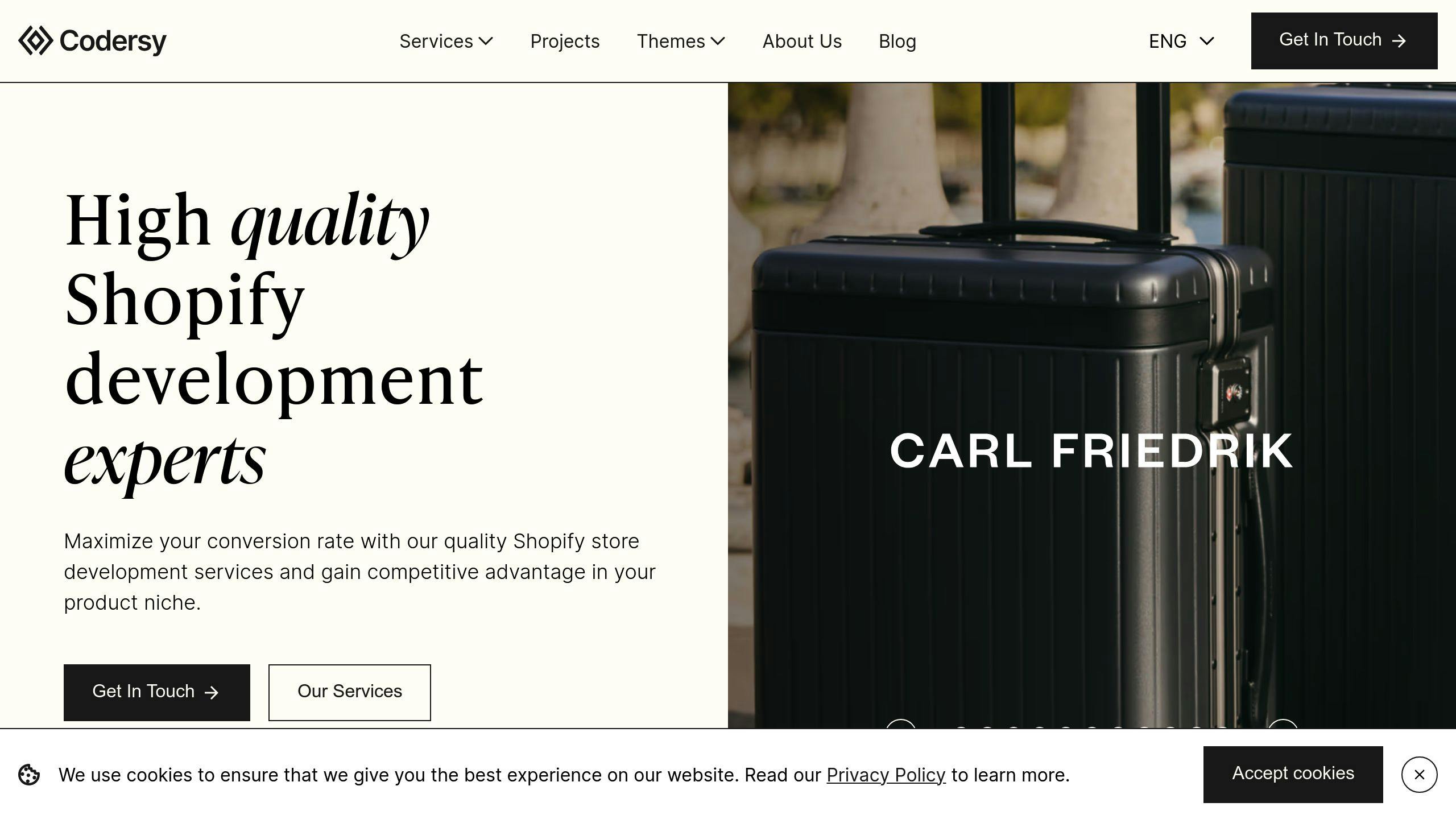By Mladen Terzic
Shopify Apps & Integrations
25th May 2025
9 min read
Shopify Flow: Automate Scaling for Growth
Discover how Shopify Flow empowers Shopify Plus stores to automate inventory, segment customers, and speed up order processing—cutting manual tasks and boosting efficiency for scalable growth.

Shopify Flow is a no-code automation tool for Shopify Plus users. It helps businesses save time and reduce errors by automating tasks like inventory management, customer segmentation, and order processing. Here’s what you can do with it:
- Automate Inventory Management: Reorder products, hide out-of-stock items, and pause related marketing campaigns.
- Segment Customers: Automatically tag customers based on purchase behavior to offer personalized experiences.
- Streamline Order Management: Detect and cancel fraudulent orders, prioritize high-value ones, and manage fulfillment rules.
How to Set Up Shopify Flow
Installing Shopify Flow
If you're a Shopify Plus user, installing Shopify Flow is a breeze. Just head to the Shopify App Store, search for "Shopify Flow", click Add app, and follow the steps to get it up and running. Once installed, you'll find it in your admin dashboard [3].
Understanding Triggers, Conditions, and Actions
Shopify Flow uses three main components to build workflows:
| Component | What It Does | Example |
|---|---|---|
| Triggers | Start the workflow | A new order is placed |
| Conditions | Set the rules for execution | Order value is over $100 |
| Actions | Define what happens next | Add a "VIP customer" tag |
These components let you automate processes that grow with your business [2].
Creating Your First Workflow
The visual builder makes it simple to design workflows. You can start with pre-built templates or basic workflows and add complexity as you go.
"Flow makes it beyond easy to create custom capabilities without needing to code, giving merchants more time to focus on growing their business" [1].
For instance, you could automate inventory tasks by setting a trigger for low stock, adding a condition for top-selling items, and creating actions to reorder stock and pause marketing efforts.
You can also use Admin API data to build workflows tailored to your needs. This allows you to include detailed, custom data in your automations [1], making it easier to align workflows with your specific business operations.
Once you're comfortable with the basics, Shopify Flow has advanced features to help you push your automations even further.
Features and Use Cases of Shopify Flow
Automating Inventory Management
Shopify Flow simplifies inventory management by automating key processes. It allows merchants to set up workflows that react instantly to stock changes. For example, when inventory runs low, Flow can alert the purchasing team, hide out-of-stock products from the store, and pause related marketing campaigns to avoid wasting ad budgets. These workflows make it easier to manage larger inventories as businesses grow, cutting down on manual tasks while keeping stock levels accurate.
Customer Segmentation and Tagging
With Shopify Flow, customer segmentation is automated and hassle-free. Using advanced logic, Flow sorts customers into groups based on their behaviors. It tracks details like purchase history, order amounts, and shopping habits to assign relevant tags and trigger actions. For example, if a customer shows consistent high-value purchases, Flow can tag them as a VIP and activate perks like exclusive offers or special service protocols. This helps businesses deliver personalized experiences at scale without extra effort.
Streamlining Order Management
Order management becomes more efficient with Shopify Flow, as it automates a wide range of scenarios. For instance, Flow can detect and cancel fraudulent orders, update inventory accordingly, and notify the necessary teams - all without manual intervention. It also uses data from the Admin API to create workflows tailored to specific needs, like prioritizing high-value orders or managing complex fulfillment rules.
Additionally, Flow integrates seamlessly with third-party apps, ensuring smooth coordination across multiple sales channels. This keeps operations running efficiently, even as businesses grow and processes become more complex.
Shopify Flow tackles common operational hurdles, offering flexibility and advanced options through its custom workflows and integrations [1][2].
Top Custom Automations for Your Shopify Store
sbb-itb-6dc743d
Advanced Tools and Customization Options
Shopify Flow offers features that go well beyond basic automation, allowing businesses to design workflows tailored to their specific needs. This makes it a versatile tool for businesses looking to streamline operations as they grow.
Connecting with Third-Party Apps
After getting comfortable with creating workflows, integrating third-party apps can expand what Shopify Flow can do. These integrations open up new possibilities by adding more data points and automation features. For example, connecting Flow with inventory management apps can help set up reordering systems that account for factors like seasonal demand, shipping schedules, and storage costs.
Building Custom Workflows
Shopify Flow includes advanced logic options, such as "or" statements and variable comparisons, which make it possible to build more detailed workflows. For example, you can create a workflow that combines inventory thresholds with seasonal trends to trigger actions like adjusting stock levels or updating marketing campaigns. These tools make it easier for businesses to manage complex processes without manual intervention.
Using Shopify Flow to Handle Growth
As businesses grow, Shopify Flow adjusts to meet increasing demands and handle more transactions. It automates repetitive tasks, minimizes errors, and keeps operations running smoothly during busy periods. This ensures businesses can maintain efficiency without needing extra oversight [2].
For companies dealing with highly complex workflows, working with specialized agencies can help maximize Shopify Flow's capabilities. Agencies like Codersy are experienced in creating advanced Flow solutions that support high-volume operations and optimize performance.
Working with Experts for Advanced Shopify Solutions
Shopify Flow offers robust tools for automation, but many businesses need expert support to make the most of its features. As automation requirements become more complex, teaming up with specialized agencies like Codersy can help fine-tune Shopify Flow workflows for scalable and efficient growth.
Codersy: Shopify Plus Development Services

Codersy specializes in crafting custom solutions that tackle advanced automation challenges, setting businesses up for long-term success. Their services include:
Advanced Integration Solutions
- Customizing Shopify Flow workflows to meet specific business demands
- Connecting third-party apps and APIs for smooth automation
- Enhancing store performance to handle high-volume operations
Technical Solutions for Automation
| Service | Automation Focus |
|---|---|
| Custom Theme Development | Aligning workflows with store design |
| Technical SEO | Automating marketing campaign improvements |
| Performance Optimization | Managing workflows efficiently at scale |
Strategic Implementation
- Pinpointing key areas for automation
- Designing workflows that can grow with your business
- Adding advanced business logic for smarter operations
Codersy’s deep understanding of Shopify Plus helps businesses unlock the full potential of Shopify Flow while keeping store performance at its best. Their technical skills and strategic approach enable businesses to build advanced automation systems that evolve as they grow [1][2].
Conclusion: Grow Your Business with Shopify Flow
Key Takeaways
Shopify Flow is an automation tool designed for Shopify Plus stores, helping businesses simplify operations and focus on growth. It automates tasks like inventory management, customer segmentation, and order processing, saving time and improving efficiency. What sets Shopify Flow apart is its ability to handle complex workflows without requiring any coding. Plus, its seamless integration with other tools makes it a great choice for businesses looking to scale in a competitive e-commerce market.
By automating these essential processes, Shopify Flow helps businesses streamline operations and create a solid foundation for growth. Ready to get started? Here's how to make the most of it.
How to Start Using Shopify Flow
Begin with straightforward workflows and gradually expand to more advanced setups for greater impact. The process typically includes three steps:
- Install and Set Up Basic Triggers: Start by installing Shopify Flow and configuring simple triggers to automate repetitive tasks.
- Create Workflows for Essentials: Focus on key areas like inventory updates and order processing to address immediate needs.
- Integrate Advanced Features: Over time, connect Shopify Flow with third-party apps to unlock more advanced automation options.
If you're looking for expert help, companies like Codersy specialize in creating custom workflows tailored to your business needs. From custom theme development to workflow optimization, they can ensure your automation aligns with long-term goals [1][2].
To maximize results, prioritize areas that will make the biggest difference, such as managing inventory or segmenting customers. As you get more comfortable, explore additional features and integrations to build a system that grows with your business.



